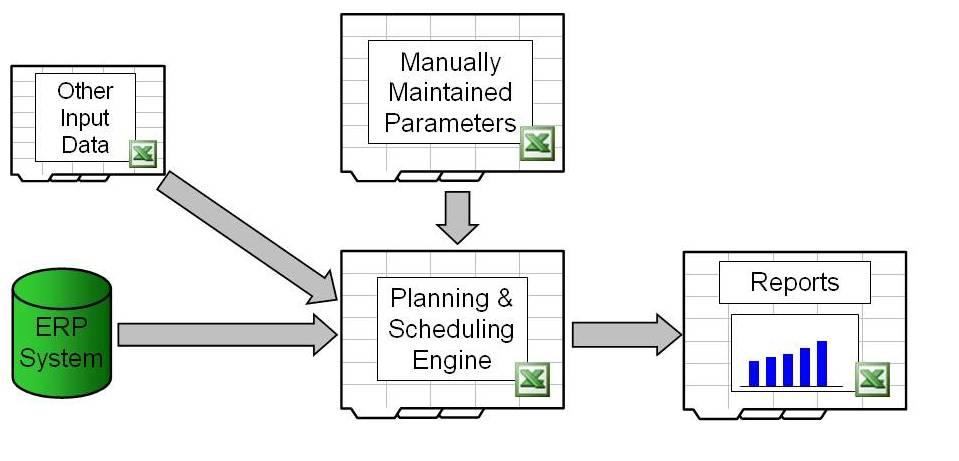The following are typical considerations to make when developing a system:
Specify
Many people who ask us to develop systems want to start with every feature possible. "We want it all, and we want it now," the song says. Smart developers start with a small scope and expand from there. Determine what causes the most harm in your company. Would you like to:
Make better promises to customers?
Do you know what raw materials to order?
Manage finished inventory levels?
Have better demand visibility?
To begin, pick just one of these.
The first step is to collect all of the necessary data in the form of normalized data tables.
The data extracted from your ERP system is most likely incorrect.
Design
You should have a notion of the reports you want to see if you work in operations rather than information technology. Separate the reports from the calculations and input data while considering the design:
What information would you need to manually prepare the reports, and where is it currently located?
In your enterprise resource planning system?
In Excel spreadsheets?
Someone's mind?
The first step is to collect all of the necessary data in the form of normalized data tables. The data extracted from your ERP system is almost certainly already normalized. Excel workbooks' data may need to be converted from a matrix to a normalized table. Tables will be required to describe data in someone's head, such as product attributes or customer groups.
The key to good design is data structure. Excel 2003 can hold 65000 rows of data, while Excel 2007 can hold over a million, so don't be intimidated by large numbers of records. Try to collect data at a low level of granularity that has not been summarized. Attempt to collect
Integration
Input data from your materials and production planning software system, as well as other sources, should be integrated. It's also a good idea to separate the application into workbooks for manually maintained parameters and reports, leaving the majority of the calculations to be done in a "engine." The engine's job is to pull in data and output the results of its calculations for reports.
Surprisingly, flat ASCII text files, not Excel files, are the fastest and most dependable way of moving data between Excel workbooks.
Improvement
The introduction of automated planning and scheduling into an organization has a significant and long-term impact on it. People work and interact in a variety of ways, so it is impossible to predict what information will be required to support the organization as it matures. The Methodology is change-aware and allows for quick, "on-the-fly" changes and improvements, allowing the system to grow and mature alongside the organization.
Thanks for reading System Development. Please share...!



0 Komentar untuk "System Development"